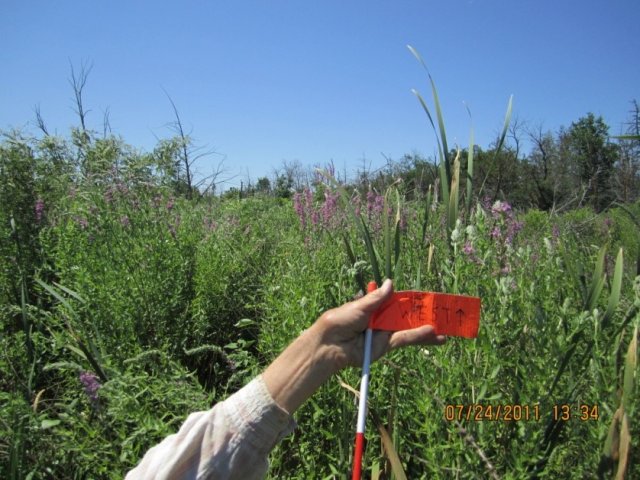Indicators: Wetland Vegetation (Introduced Species)
What are introduced plant species?
Introduced plant species are species that are not native to the specific locations where they are found. These non-native plants have usually become established at new locations due to deliberate or accidental human activities. Introduced species that cause economic or environmental harm, or harm to human health, are called invasive species.
Why is it important to evaluate introduced plants?

Introduced plants have a number of direct and indirect effects on native vegetation and other ecosystem components. They have been linked to population declines or extinction of rare, native plants; changes in species composition or community type; alteration of fire regimes, hydrologic processes and carbon storage patterns; and changes in nutrient cycling and soil organism composition.
What can introduced plants tell us about the condition of water?
Introduced plants are indicators of the ecological integrity of waters and evidence of increased human-caused disturbance in the watershed. Invasive non-native plants can impede water flow, crowd out native plants, impair wildlife habitat, decrease the amount of dissolved oxygen and limit light penetration.
How is this indicator used in NARS?
The National Wetland Condition Assessment collects data on nonnative species which is available on the NARS data page. Below the table you access assessment information in current reports.
| NLA | NRSA | NCCA | NWCA | Indicator Type |
|---|---|---|---|---|
| X | Core Indicator | |||
| Research Indicator |
National Wetland Condition Web Report – Nonnative Plant Results
